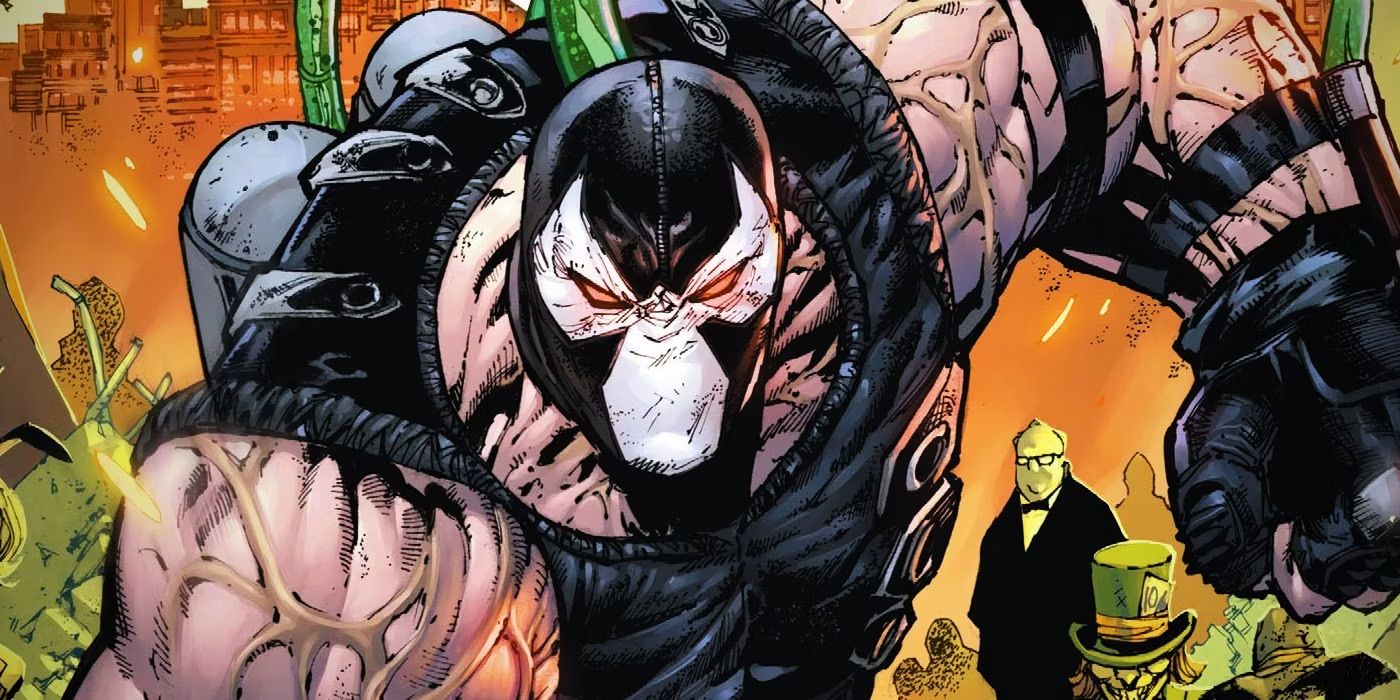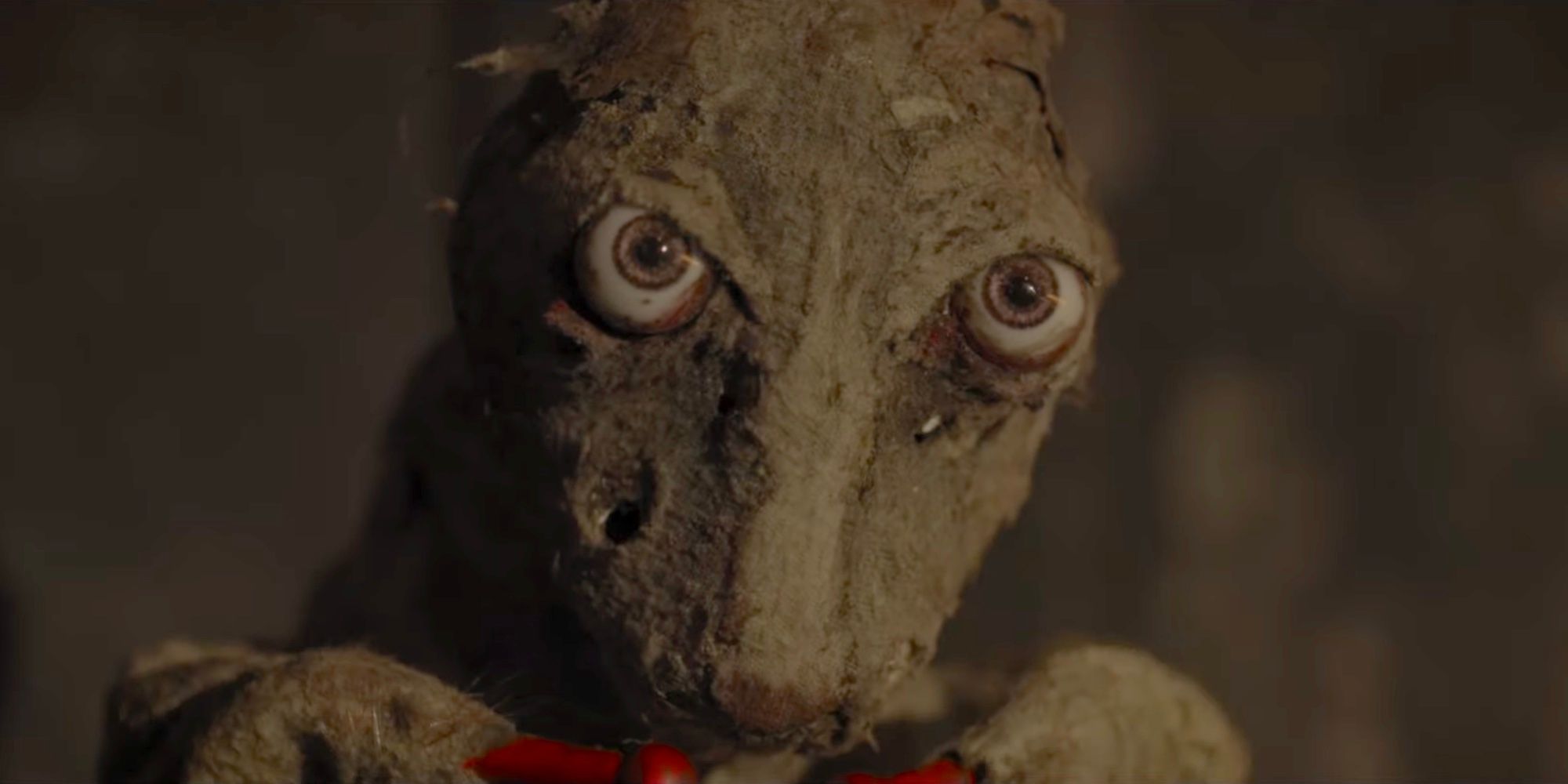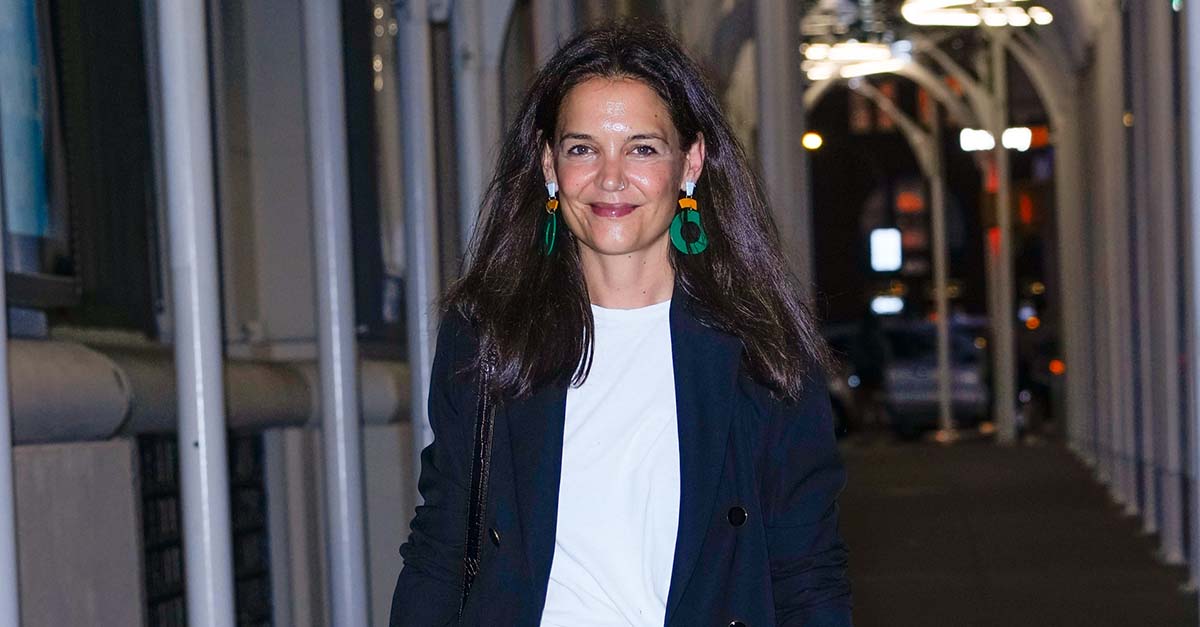The Big Picture
- Damian McCarthy’s Caveat creates unbearable tension over gimmicky jump scares, mastering the art of building suspense from multiple angles and via different mediums.
- The ominous eyes in
Caveat
, from portraits to dolls, symbolize a malevolent presence that haunts and guides the characters. - French and Skyes’ minimalist performances evoke terror with their restricted body language and intense eye movements that build tension in the claustrophobic setting.
Damian McCarthy‘s newest release, Oddity (with a coveted 97% on Rotten Tomatoes), proves his patience as a director, as restraint and precision flowers his work, opting for unbearable tension rather than relying on gimmicky jump scares. This discipline began in his directorial debut, Caveat, which unfolds with immeasurable waves of claustrophobia that cinches around our nerves, rolling into an absolutely bonkers final act. McCarthy masters the art of curating tension in Caveat, allowing it to blossom from multiple angles and via different mediums. The set closes in around us; the score regulates our heartbeats; and the unflinching eyes gaze at every minute reaction. Pared back and crisp in its cinematography, Caveat demands our attention at every resounding beat of its runtime, paralyzing us in place with trembling limbs and outright terror.

Caveat (2020)
A drifter with partial memory loss accepts a job to look after a psychologically troubled woman in an isolated house. As unsettling events unfold, he uncovers dark secrets and struggles to survive a nightmarish situation filled with tension and terror.
- Release Date
- October 10, 2020
- Director
- Damian Mc Carthy
- Cast
- Jonathan French , Leila Sykes , Ben Caplan Conor Dwane , Inma Pavon
- Runtime
- 88 Minutes
- Writers
- Damian Mc Carthy
What Is ‘Caveat’ About?
Caveat follows the lonesome drifter, Isaac (Johnathan French), as he amicably takes on a five-day babysitting role for his friend, only to find out that there are bright red stipulations involved. First, the job is to take place on a tiny island only accessible by boat. Second, his friend’s niece, Olga (Leila Skyes), is insanely paranoid, and would only feel comfortable if the babysitter is locked into a shackled leather vest that restricts their movement. Most of the film, barring a few flashbacks, is set in the single location of the isolated house, and McCarthy stretches his small budget to ensure the place is the stuff of nightmares. Peeling wallpaper, labyrinthine hallways, and creaking doors all make the grimy and dimly-lit house feel like it is seconds away from caving in. This decrepit set design establishes baseline levels of claustrophobia that are just waiting to increase as the film goes on.
The house itself also becomes a malevolent presence, exuding malicious intentions and a sordid history. After Isaac accepts the job, as compassion for the catatonic Olga wins over his gut instincts, he explores the twists and turns of the dark halls and eventually finds his way to the basement he is forbidden from entering. As he discovers the secret passageways embedded within the walls of the dilapidated house, it’s almost as if the house spurs him on to uncover more of its hidden depths. The set becomes a direct reflection of the family that once occupied it — broken and elusive. Both also harbor a history that makes our stomach curdle, but it is one that is desperately waiting to be divulged and thus, is thrilled by Isaac’s presence and openness.
‘Caveat’ Uses Eyes to Create a Sense of Evil
On the first night, Isaac tosses and turns on his bed, unable to find respite with the two white eyes boring into him from a nearly all-black portrait on the wall. The woman in the portrait has porcelain skin, strict lines, and arched brows, conveying an interrogatory, or even accusatory, look. At one point, her features subtly change, emphasizing her eyes as they further widen and demand our attention as a salient spot on the dark canvas. Eyes quickly become a recurring motif in Caveat, as they also become a prominent feature and source of terror when Isaac discovers the cold secret hiding in the basement. Like the house, the eyes also seem to encourage (well, threaten) Isaac to continue his curious expedition to reveal the history of the family. They symbolize being able to see the truth, all while ominously watching his every move and enhancing the spine-tingling crowding of inescapable claustrophobia.

Related
‘Oddity’ Review: A Supernatural Horror That Will Tear You To Pieces
Yeah, you should definitely stick your hand in the mouth of the perpetually screaming wooden man.
This imagery is also seen in the bunny doll with unnervingly human-like eyes, which becomes one of the more memorable iconographies of the movie. McCarthy is clearly drawn to the concept of an almost sentient yet horrifying object, as he also includes the wooden man in Oddity. However, the bunny doll also acts more like an omniscient spirit guardian for the characters in Caveat as it clanks on its drums to signify the presence of evil. As it takes on the role of the harbinger of the spirit that may embody this house, the eyes not only encourage Isaac’s investigation but also become the antithesis of the evil eye, where the eyes don’t cause evil but instead warn others of its presence. This is accentuated by the opening scene of Olga using the creepy doll as a dowsing rod. As such, Olga’s “see no evil” pose when she is in one of her catatonic stupors highlights how the family has skirted around the bleak and conspicuous darkness in the house.
‘Caveat’ Creates Tension With Minimalist Performances
Eyes don’t only have symbolic significance in Caveat but are also a key aspect of both French and Skyes’ performances. Both actors keep their body language restricted and difficult to discern. It’s as if they are mimicking wearing the awful, claustrophobic leather vest, completely rigid and intrepid in their stances. Instead, any panic, fear, or paranoia they feel is usually conveyed by their eyes. “The eyes are the window to the soul” takes a whole new meaning in Caveat, as their ocular movements become the only window to any insight into their emotions. With their performances limited to tweaking their eye sockets, the rest of their facial expressions are usually deadpan coupled with minimal dialogue. They only speak to each other when absolutely necessary, preferring their own company as inherently lonely characters. Both Olga and Isaac reveal that they essentially have no significant relationships, leaving Isaac in a precarious position and Olga in a more powerful one.
These limitations make the air around these two compelling characters more stoic and unnerving, once again building up the tension that continues to enclose us. Even when faced with outright terror in the finale, Isaac’s eyes become the most compelling part of his performance. This is one of the rare times he allows fear to invade his facial expressions, yet we are unconsciously drawn to the enlarged eyes after being exposed to the motif so extensively throughout the runtime. His more chaotic and prevalent eye movements during this time also signify his escape from the amnesia that ailed him previously. He had forgotten that he had been to this house before to aid Olga’s uncle’s nefarious plans. Recounted through a series of hazy flashbacks, the truth finally dawns on him in this haphazard finale, which causes his eyes to widen, allowing the truth to trickle in. Horrifically, the universal “fear of the unknown” is twisted into something more disastrous here, as he discovers his complicity in past crimes, and the horror dawns upon him.
You Won’t Find Closure at the End of ‘Caveat’
However, truths are only partially revealed in Caveat, as we are privy to gruesome details of the family’s history, but never the whole story. The flashback montage only reveals Isaac’s half of the story, but the deep-rooted history in the house is never fully divulged. Hints of potential ghosts or insanity could explain the blood-curdling events, yet each theory devolves into a series of questions and gaps that we never really get closure to. In this way, we are explicitly put into Isaac’s shoes, only seeing his point of view as he finally gulps in the fresh air at the end of the film yet is left with a haunting uncertainty that undermines his newfound freedom. The ambiguity curdles up more dread and eeriness, allowing the dark mood to suffocate us throughout the entire film. We are never quite sure what is going on and are only exposed to the details that will invoke the most anxiety, even in the seemingly relieving end.
McCarthy cares more about the shivering tension we feel rather than the cheap thrills of the genre, giving us a piece that is certain in its uncertainty and bold in its hesitance. He knows that simple ambiguity will rile us up, leaving us with a gaping hole that will haunt us as we try to make sense of the jagged shards of truth we retrieve from this incomplete story. Caveat relies on slow-burn doom, even when its wacky finale gives us a somewhat cathartic release that doesn’t necessarily offer us complete closure. While we are given a momentary reprieve with fresh air as Isaac steps out of the house, we are left restless and hungry for the truth, even if we know it can never be fully realized.
Caveat is available to stream now on Shudder in the U.S.








































































